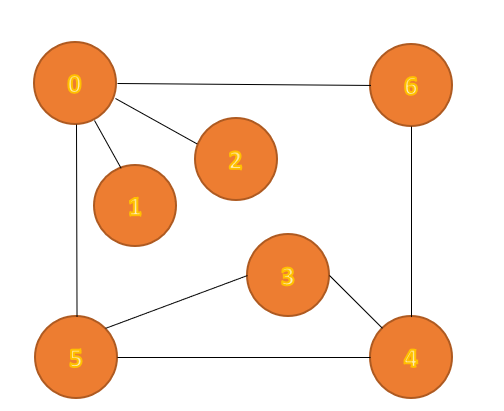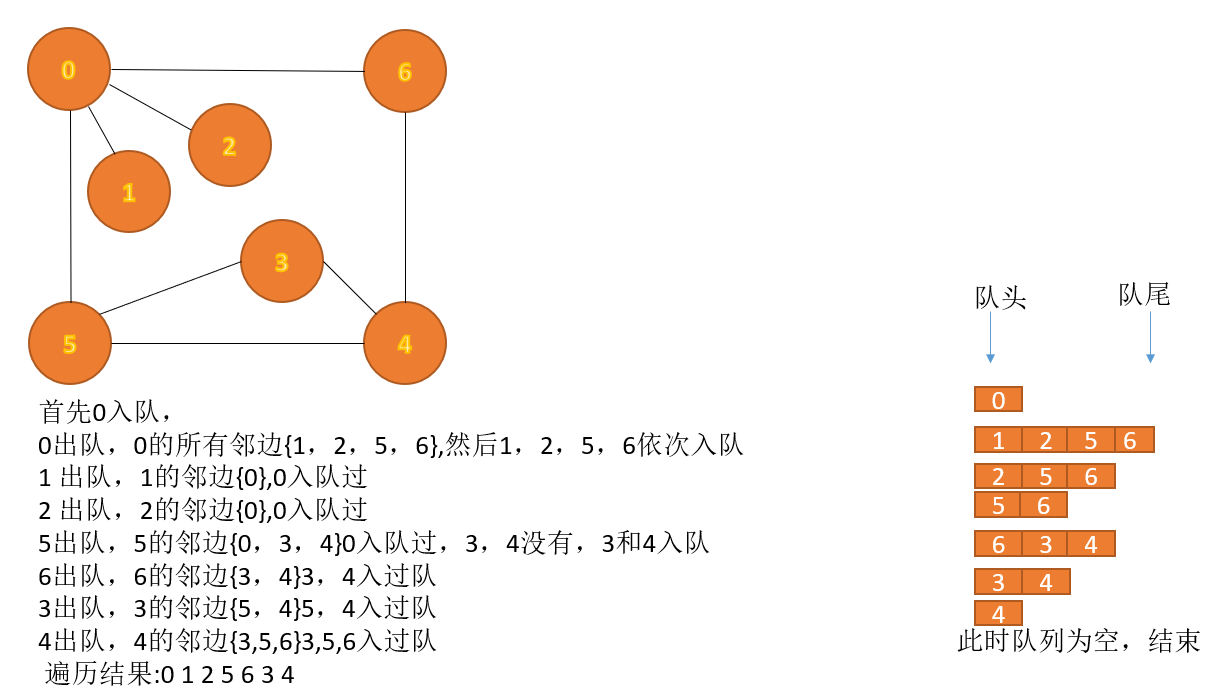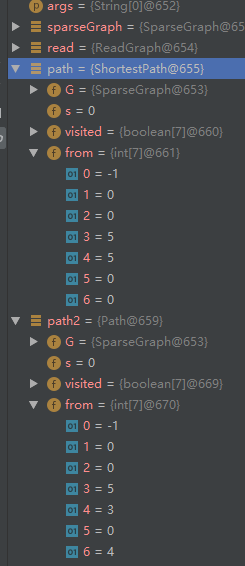对于图这种数据结构,一般有两种遍历即深度优先(dfs),和广度优先(bfs),假设我们有如下这张图:

访问过程
现在假设计算0到其它点的路径,根据广度优先遍历,广度优先遍历需要借助于队列这种数据结构,思路分析:

注意:访问某一个顶点时,要进行标记是否被访问过以及其巧妙利用数组的索引跟顶点
计算路径
那如何找到顶点到某一点的路径?其实思路跟深度优先遍历中查找路径方法是一样的,但是在记录访问的数组中保存的数据却是不一样的(代码实现中from数组),这就跟我们的遍历方式有关,深度优先遍历采用递归,广度优先遍历是借助于队列这种数据结构。上述步骤我们可以这样记录(初始化数组的值为-1):arr[6]=0,arr[0]=-1,因此路径是0->6。同时我们也可以发现一个问题,这次我们一下就找到路径。以下是深度优先遍历(path)和广度优先遍历(path2)from数组内部的数据

代码实现
public class ShortestPath {
/**图的引用*/
private Graph G;
/**起始点*/
private int s;
/**记录bfs的过程中节点是否被访问*/
private boolean[] visited;
/**记录路径, from[i]表示查找的路径上i的上一个节点*/
private int[] from;
/**构造函数, 寻路算法, 寻找图graph从s点到其他点的路径*/
public ShortestPath(Graph graph, int s) {
this.G = graph;
this.s = s;
visited = new boolean[graph.n()];
from = new int[G.n()];
for(int i=0;i<G.n();i++){
visited[i]=false;
from[i] = -1;
}
Queue<Integer> queue = new LinkedList();
queue.add(s); //首先将0点加入队列
visited[s]=true;
while(queue.size()!=0){
int a = queue.poll();
for(int i:graph.adj(a)){
if(!visited[i]){
queue.add(i);
visited[i] = true;
from[i] =a;
}
}
}
}
/**查询从s点到w点的路径, 存放在vec中**/
public Vector path(int w){
Stack<Integer> s = new Stack<Integer>();
int p=w;
while(p!=-1){
s.push(p);
p=from[p];
}
Vector<Integer> vector = new Vector<>();
while (!s.empty()){
vector.add(s.pop());
}
return vector;
}
/**打印路径*/
public void showPath(int w){
Vector vector = this.path(w);
for(int i=0;i<vector.size();i++){
System.out.print(vector.elementAt(i));
if(i==vector.size()-1){
System.out.print("");
}
else{
System.out.print("->");
}
}
System.out.println();
}
public static void main(String[] args) {
Graph sparseGraph= new SparseGraph(7,false);
ReadGraph read = new ReadGraph();
read.readGraph(sparseGraph,"demo/component3.txt");
ShortestPath path = new ShortestPath(sparseGraph,0);
path.showPath(6);
System.out.println("-------------------------------");
read.readGraph(sparseGraph,"demo/component3.txt");
Path path2 = new Path(sparseGraph,0);
path2.showPath(6);
}